Related Research Articles
Patrick O'Brian, born Richard Patrick Russ, was an English novelist and translator, best known for his Aubrey–Maturin series. These sea novels are set in the Royal Navy during the Napoleonic Wars and centre on the friendship of the English naval captain Jack Aubrey and the Irish–Catalan physician Stephen Maturin. The 20-novel series, the first of which is Master and Commander, is known for its well-researched and highly detailed portrayal of early 19th-century life, as well as its authentic and evocative language. A partially finished 21st novel in the series was published posthumously containing facing pages of handwriting and typescript.

Master and Commander is a nautical historical novel by the English author Patrick O'Brian, first published in 1969 in the US and 1970 in the UK. The book proved to be the start of the 20-novel Aubrey–Maturin series, set largely in the era of the Napoleonic Wars, on which O'Brian continued working until his death in 2000.
The Aubrey–Maturin series is a sequence of nautical historical novels—20 completed and one unfinished—by English author Patrick O'Brian, set during the Napoleonic Wars and centring on the friendship between Captain Jack Aubrey of the Royal Navy and his ship's surgeon Stephen Maturin, a physician, natural philosopher, and intelligence agent. The first novel, Master and Commander, was published in 1969 and the last finished novel in 1999. The 21st novel of the series, left unfinished at O'Brian's death in 2000, appeared in print in late 2004. The series received considerable international acclaim, and most of the novels reached The New York Times Best Seller list. These novels comprise the heart of the canon of an author often compared to Jane Austen, C. S. Forester and other British authors central to English literature.
Stephen Maturin is a fictional character in the Aubrey–Maturin series of novels by Patrick O'Brian. The series portrays his career as a physician, naturalist and spy in the Royal Navy during the Napoleonic Wars, and the long pursuit of his beloved Diana Villiers.
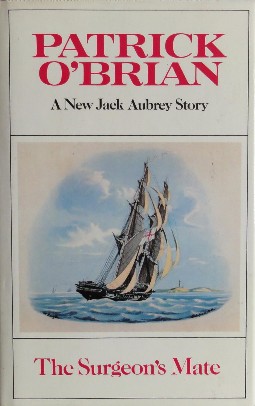
The Surgeon's Mate is the seventh historical novel in the Aubrey–Maturin series written by Patrick O'Brian, first published in 1980. The story is set during the War of 1812 and the Napoleonic Wars.

The Nutmeg of Consolation is the fourteenth historical novel in the Aubrey-Maturin series by British author Patrick O'Brian, first published in 1991. The story is set during the Napoleonic Wars and the War of 1812.

The Fortune of War is the sixth historical novel in the Aubrey–Maturin series by British author Patrick O'Brian, first published in 1979. It is set during the War of 1812 and much of the story takes place in Boston, Massachusetts.
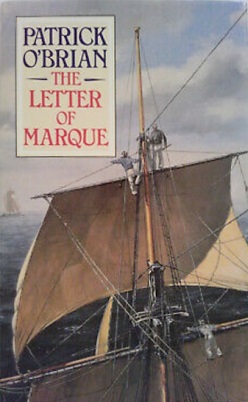
The Letter of Marque is the twelfth historical novel in the Aubrey–Maturin series by Patrick O'Brian, first published in 1988. The story is set during the Napoleonic Wars and the War of 1812.

Blue at the Mizzen is the twentieth and last completed historical novel in the Aubrey-Maturin series by Patrick O'Brian, first published in 1999. It is set after the Napoleonic wars, in the fight for Chilean independence from Spain.
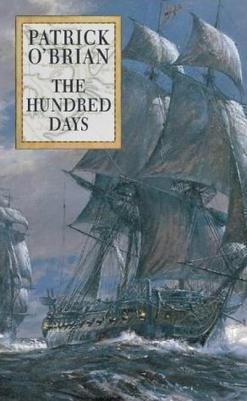
The Hundred Days is the nineteenth historical novel in the Aubrey-Maturin series by British author Patrick O'Brian, first published in 1998. The story is set during the Napoleonic Wars, specifically in their last portion in 1815, the Hundred Days.
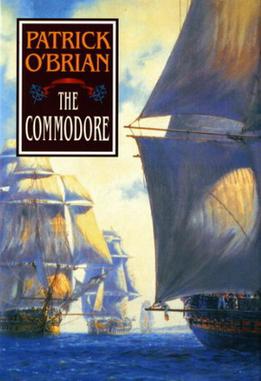
The Commodore is the seventeenth historical novel in the Aubrey-Maturin series by British author Patrick O'Brian, first published in 1995. The story is set during the Napoleonic Wars and the War of 1812.

The Wine-Dark Sea is the sixteenth historical novel in the Aubrey-Maturin series by British author Patrick O'Brian, first published in 1993. The story is set during the Napoleonic Wars and the War of 1812.

Clarissa Oakes is the fifteenth historical novel in the Aubrey-Maturin series by British author Patrick O'Brian, first published in 1992. The story is set during the Napoleonic Wars and the War of 1812.

In the rating system of the Royal Navy used to categorise sailing warships, a sixth-rate was the designation for small warships mounting between 20 and 28 carriage-mounted guns on a single deck, sometimes with smaller guns on the upper works and sometimes without. It thus encompassed ships with up to 30 guns in all. In the first half of the 18th century the main battery guns were 6-pounders, but by mid-century these were supplanted by 9-pounders. 28-gun sixth-rates were classed as frigates, those smaller as 'post ships', indicating that they were still commanded by a full ('post') captain, as opposed to sloops of 18 guns and less, which were under commanders.
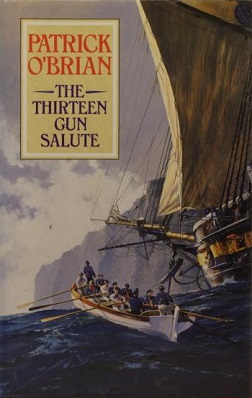
The Thirteen-Gun Salute is the thirteenth historical novel in the Aubrey–Maturin series by Patrick O'Brian, first published in 1989. The story is set during the Napoleonic Wars and the War of 1812.

The Adventures of Roderick Random is a picaresque novel by Tobias Smollett, first published in 1748. It is partially based on Smollett's experience as a naval-surgeon's mate in the Royal Navy, especially during the Battle of Cartagena de Indias in 1741. In the preface, Smollett acknowledges the connections of his novel to the two satirical picaresque works he translated into English: Miguel de Cervantes' Don Quixote (1605–15) and Alain-René Lesage's Gil Blas (1715–47)
This is a list of recurring characters in the Aubrey–Maturin series of novels by Patrick O'Brian. As is noted in the articles about each novel, some of these characters are based on real historical persons, while others are purely fictional. Because there is an article describing each novel, links are made to those articles when mentioning the stories in which each character appears. References to page numbers, where they appear, are based upon the W. W. Norton & Company printing of the novels.
The Medical Assistant is a Royal Navy medical rating in the United Kingdom. Medical Assistants serve on all types of ships in the surface fleet, submarine fleet, Royal Marines, Fleet Air Arm or ashore in a sick bay, hospitals, or other establishment. The equivalent rate in the United States Navy (USN) is hospital corpsman.
A naval surgeon, or less commonly ship's doctor, is the person responsible for the health of the ship's company aboard a warship. The term appears often in reference to Royal Navy's medical personnel during the Age of Sail.
A surgeon's mate was a rank in the Royal Navy for a medically trained assistant to the ship's surgeon. The rank was renamed assistant surgeon in 1805, and was considered equivalent to the rank of master's mate/mate. In 1807, first-rate would have three, a third-rate two, and frigates and sloops one.
References
- ↑ "The Surgeon in Battle at Sea". The Lancet. 206 (5335). Elsevier: 1130. 28 November 1925. doi:10.1016/S0140-6736(01)16696-1.
- ↑ "Loblolly boy". Michael Quinlon. 2000. Retrieved 2 January 2019.
- ↑ Kemp, Peter, ed. (1993). The Oxford Companion to Ships and the Sea. Oxford: Oxford University Press. p. 491. ISBN 0192820842.